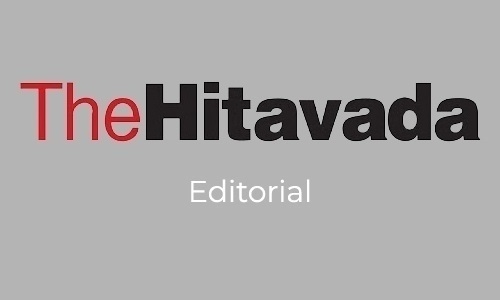Kessler Syndrome
| Date :23-Sep-2022 |

WITH Earth’s Orbits getting crowded, the risks of Kessler syndrome – a catastrophic and irreversible chain reaction of on-orbit collisions between debris and operational satellites –is becoming high, even though according to the most recent projection by Merrill Lynch/Bank of America, the space economy would grow to $2.7 billion by 2040, while the global commercial revenues reached an estimated $271 billion in 2020. The monetary losses in case of Kessler Syndrome have been estimated to $191.3 billion.
In September 2021, there were some 4500 operational satellites in Earth’s orbits, and most are in lower-Earth orbits. More satellites were launched into space in 2021 than in the entire preceding decade and tens of thousands of satellites should be launched in the next five years, says a recently released OECD study titled ‘Earth’s Orbits at Risk: The Economics of Space Sustainability.’
The space activities have become unprecedentedly high. The Starlink constellation had reached more than 1700 operational satellites by the end of 2021 and offered beta services to a score of countries in Europe, North and South America as well as Australia. Other operators, in North America and China in particular, also have many projects in the pipeline. In 2021, the Chinese Government announced that it would develop a 13 000-satellite Guo Wang (“national network”) broadband constellation. The same year, the Korean defence company Hanwha Systems published plans to develop a 2000-satellite constellation, to be finalised by 2030.
It also caused great accumulation of space debris. “Orbital debris has increased remarkably in the last 15 years and the socio-economic impacts of a major space debris accident could be dramatic due to cascading effect,” the OECD report warns. “The overwhelming concern is that orbital debris density reaches such levels that it triggers the so-called Kessler Syndrome.” In that case “certain high value orbits may become unusable, while debris concentrations could even block access to higher orbits.”
Outer space seems infinite. However, certain orbital region around the Earth are rapidly becoming congested, though over the past two decades, the socio-economic importance of the space sector has increased as space products and services are becoming more affordable and versatile. By 2022, almost 90 countries had operated a satellite in orbit at some point in time. Society’s reliance on space-based infrastructure is growing with space technologies supporting important societal functions such as communication, transportation, food production and a range of Government services, including defence and weather forecasting.
In this backdrop, losing high value orbits would have negative impacts on multiple space-derived services that are beneficial to society.
The provision of weather forecasting, navigation services and climate monitoring, as well as important commercial activities such as telecommunications and satellite broadband, could all be affected. The societal costs could be massive and faced across society – even more so in regions with less developed terrestrial infrastructure and dependent on satellite services, the study warns.
In this scenario, we are in need of more economic analysis of space sustainability and better policies regarding the space. OECD report has emphasised on fresh assessment on the potential costs of space debris incidents and their impact. This report has been brought out in the fist phase, and it aims to expand this new field of research and broaden the international knowledge base in the second phase in 2022-23.
Environmental economics do provide a set of tools that may be used to analyse the effects of space debris on the sustainability of space activities, but another analytical framework has been developed to understand the economic effects of space debris drawing on parallels between space debris accumulation and other environmental issues. The research introduces methods for estimating categories of costs and benefits that have been excluded from previous cost-benefit assessments of satellite projects.
While estimating the huge loss of $191.3 billion in case of Kessler Syndrome, the report points out this large sum in proportion to the resources currently committed to debris mitigation and remediation globally. “Estimating the loss associated with excessive debris in Earth’s orbit in monetary terms suggests more resources should be devoted to mitigating debris,” it opines.
Even though, assessing the value of space infrastructure suggests the benefits of sustaining space activities are large, because considerable benefits accrue from Earth observation data which in turn positively affects turnover and employment via the development of new services and product or entrance to new markets or sectors.
Satellite operators’ incentives to adopt debris mitigation measures have been assessed by comparing their cost to the potential damages in case of a collision. Based on estimated growth in space objects in low-Earth orbits, different mitigation scenarios with and without active debris removal have also been explored. On the basis of these costs and benefits assessment, the report has found Government intervention crucial.
Evaluating commercial and public markets for active debris removal suggests scope for “active debris removal” business model development. However, the business models are still immature. Therefore, such public intervention is needed that favours flexible and diversified forms of public procurement, R&D support to firms and dedicated Government projects.